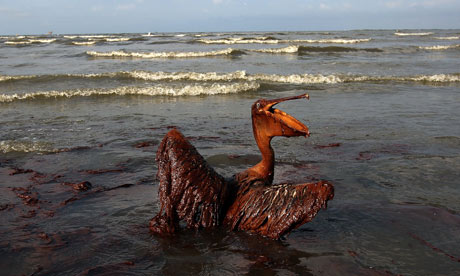 At a time when the White House, Congress, government officials and oil companies are trying to put the oil disaster behind them, that is not the message from the deep that people are waiting to hear. Joye's data – and an outspoken manner for a scientist – have pitted her against the Obama adminstration's scientists as well as other independent scientists who have come to different conclusions about the state of the Gulf. She is consumed by the idea that she – and other colleagues – are not really being heard."It's insanely frustrating," Joye says.
At a time when the White House, Congress, government officials and oil companies are trying to put the oil disaster behind them, that is not the message from the deep that people are waiting to hear. Joye's data – and an outspoken manner for a scientist – have pitted her against the Obama adminstration's scientists as well as other independent scientists who have come to different conclusions about the state of the Gulf. She is consumed by the idea that she – and other colleagues – are not really being heard."It's insanely frustrating," Joye says.
She never expected to be a science dissident, she says, or gain such a large public profile. She sees herself as a science nerd and a brainiac who never knew how to play, even as a child. To round off the picture of a ferocious intellect, Joye says she had a photographic memory when she was younger. Her perfect recall has faded, now that she is in her 40s, but that intensity of focus is still there.
In the past year, Joye – as well as other independent scientists – has repeatedly challenged the official version of the oil disaster put forward by the White House and other administration officials.
Last May, her research team was the first to detect the presence of a vast plume of oil droplets swirling at high speed through the deep waters of the Gulf. The discovery – initially disputed by government scientists – suggested that far more oil and gas had entered the sea than they had originally estimated.
In December, Joye's team knocked down another White House claim – that the vast majority of the oil was gone – when she discovered a thick coating of oil, dead starfish and other organisms on the bottom of the ocean, over an area of 2,900 square miles.





 The Trump administration sued two California cities on Monday, seeking to block local laws that restrict...
The Trump administration sued two California cities on Monday, seeking to block local laws that restrict... Mudslides buried cars and homes up to their windows in a California mountain town as a...
Mudslides buried cars and homes up to their windows in a California mountain town as a... 6.5 magnitude earthquake shook the Mexican state of Guerrero in the southern part of the country...
6.5 magnitude earthquake shook the Mexican state of Guerrero in the southern part of the country... Republicans are attempting to exempt some major polluters from paying for Pfas “forever chemical” cleanup. If...
Republicans are attempting to exempt some major polluters from paying for Pfas “forever chemical” cleanup. If...






























